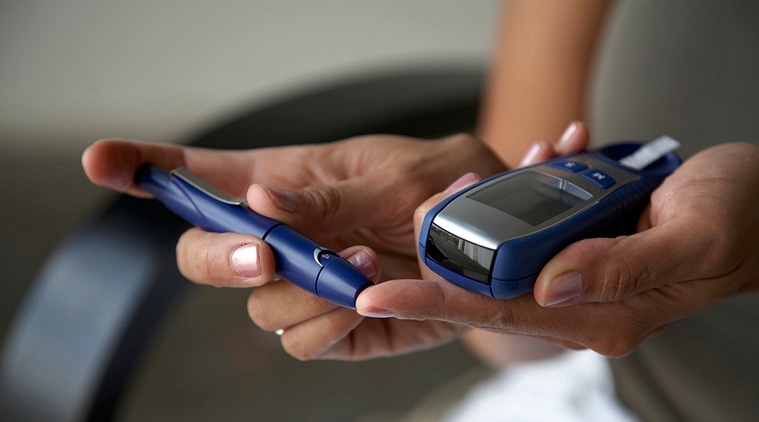 India has 69.2 million cases of diabetes.
India has 69.2 million cases of diabetes.
Four months ago, when the first ever attempt to chronicle India’s disease burden by states over a 16-year period till 2016 was made public, the most startling finding was this: The more developed states had managed to rein in communicable diseases, but their illness burden was by no means less, it had merely changed. Diarrhoea deaths had been replaced by those living with diabetes.
In other words, since the 1990s, India has been hurtling towards the dubious distinction of becoming the diabetes capital of the world. Today, according to the National Health Portal, India, with 69.2 million cases, stands second on the world diabetes chart, after China with over 100 million cases.
But what the disease burden study released last November and an ICMR-INDIAB study, published in The Lancet Diabetes Endocrinology in June 2017, also show is that even when it comes to diabetes, the Indian landscape is extremely diverse.
“The overall prevalence of diabetes in all 15 states of India was 7.3% (of the population). The prevalence of diabetes varied from 4.3% in Bihar to 10.0% in Punjab and was higher in urban areas (11.2%) than in rural areas (5.2%) and higher in mainland states (8.3%) than in the northeast (5.9%),” the study noted.
The other telling finding: States with higher per-capita GDP seemed to have a higher prevalence of diabetes.
“In rural areas of all states, diabetes was more prevalent in individuals of higher SES. However, in urban areas of some of the more affluent states (Chandigarh, Maharashtra, and Tamil Nadu), diabetes prevalence was higher in people with lower SES. The overall prevalence of prediabetes in all 15 states was 10.3%. The prevalence of prediabetes varied from 6.0% in Mizoram to 14.7% in Tripura, and the prevalence of impaired fasting glucose was generally higher than the prevalence of impaired glucose tolerance,” the study found.
It concluded that age, male sex, obesity, hypertension, and family history of diabetes were independent risk factors for diabetes in both urban and rural areas.
The diagnosis is grim. “There is no doubt that when it comes to diabetes we are looking at a potentially explosive situation,” says Dr Lalit Dandona, Public Health Foundation of India, who led the group that conducted the state-level study.
“Small lifestyle changes have made a lot of difference. For instance, only odd exceptions cycle to work now. It is a global phenomenon but the effects have somehow been magnified in India,” says Dr Nikhil Tandon, professor of endocrinology and metabolism at AIIMS, New Delhi.
The path ahead to reverse the change is clear, say experts: A system of early detection.
Says Dr Anoop Misra, chairman, Fortis-C-DOC Centre of Excellence for Diabetes, Metabolic Diseases and Endocrinology, “Food choices, inactivity and stress are the primary culprits, urbanisation and mechanisation have added to that along with the rise of obesity in children and young adults. The problem is as the world around us changed, our genes remain the same — our bodies are not attuned to a high calorie diet. Exposure to centuries of famines have made our bodies prone to storing fat in preparation for a period of starvation. Besides we never ate that much proteins, we were basically vegetarians. The protein metabolism is not that efficient.”
In the same way as India is not homogenously vegetarian, or on a protein deficient diet, the diabetes incidence, too, is variable, say experts.
Dr Tandon of AIIMS says that genes alone cannot explain the massive spike in diabetes simply because they take millenia to alter. Here, the changes have been visible in a matter of a few decades — the state-level study covered the period from 1990 to 2016.
Now in the process of preparing another report on diabetes incidence in states, he says, “One certain trend is that states — for example, like Bihar — which had a lower baseline showed a far higher increase even though the absolute numbers are still lower than, say, Tamil Nadu, Kerala or Punjab. Large swathes of the south, and Maharashtra, Goa and Punjab, show higher values than Rajasthan, MP, UP and Chhattisgarh. The ICMR study showed that even the Northeast is not as homogenous as we had thought. Tripura has the highest incidence. The factors would be differential nutrition, pollution but it cannot be a purely genetic thing because genes take much longer to change, this has happened over too short a time span.”
A study by Harvard TH Chan School of Public Health published online in JAMA Internal Medicine looked at health data, which included plasma glucose from 1.32 million adults in 27 states (except Gujarat and J&K) and five UTs between 2012 and 2014. Standardised for age, diabetes prevalence in India was 6.1% among women and 6.5% among men.
For comparison, the paper cites corresponding estimates for prevalence in the US — for diabetes, 6.4% among women and 8.1% among men; for hypertension, 10.8% among women and 15.5% among men.
Diabetes was most prevalent in Andhra Pradesh, Goa, Karnataka, Kerala, Tamil Nadu, Delhi and West Bengal. The prevalence of diabetes varied from 2.33% among women in Madhya Pradesh to 17.90% among men in Goa.